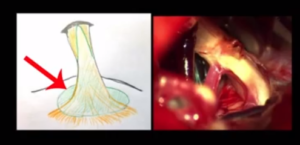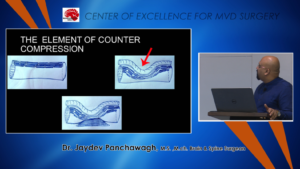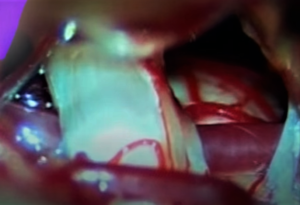MVD Surgery
India's Best MVD Surgery Centre in Pune
MVD Surgery | Treatment by Expert Neurosurgeon Dr. Jaydev Panchwagh for Trigeminal Neuralgia and Hemifacial Spasm
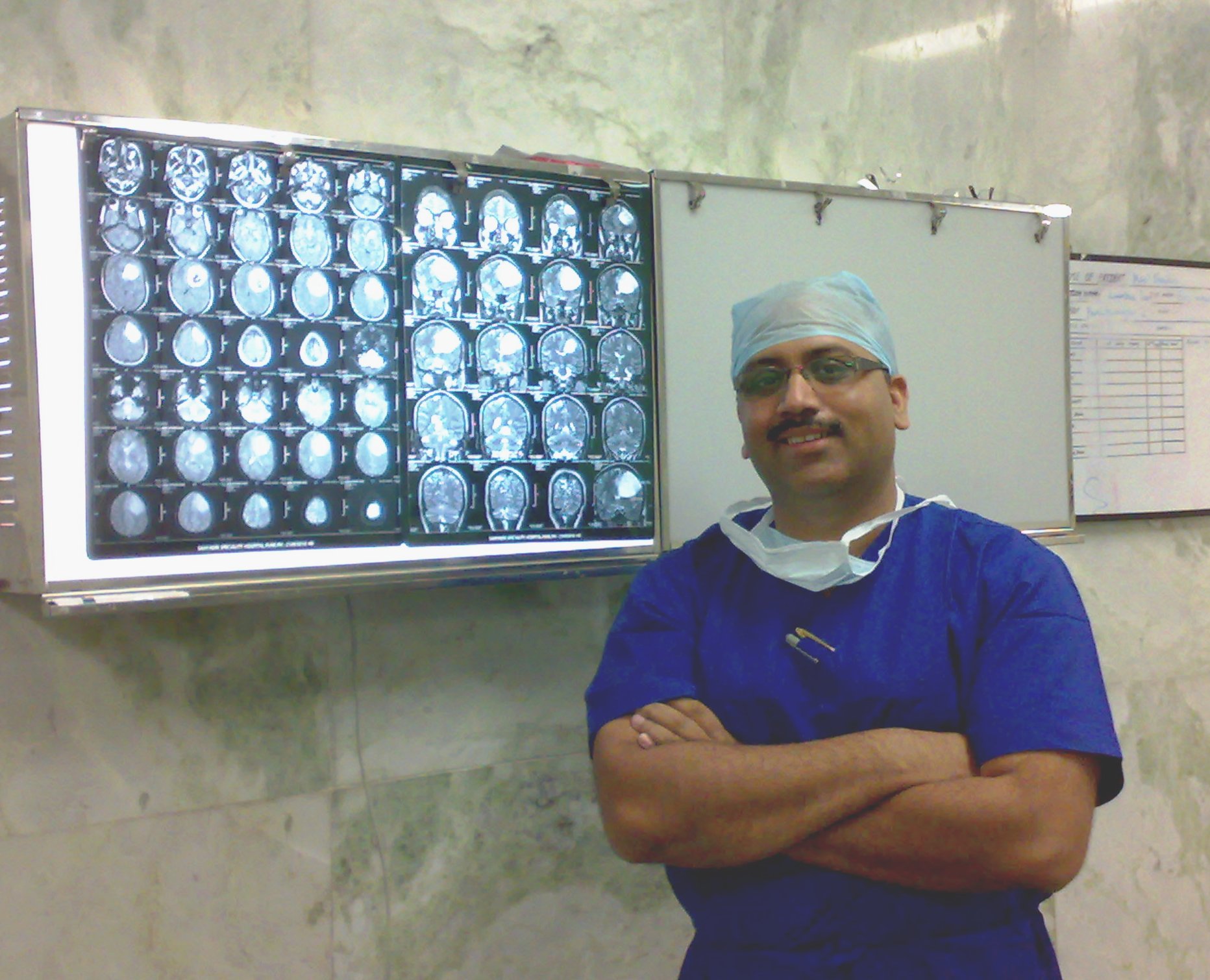
Microvascular Decompression Surgery MVD
Microvascular Decompression surgery or MVD for Trigeminal Neuralgia stands out among all the treatment procedures because it is nerve preserving and addresses the root cause of the problem.
In this section , as in most of the website, we have tried to bring out the detailed replies to questions that our patients or readers want answers for. We have thus aimed to make it as interactive as possible, with the hope that you will find an answer to the question you are looking for. If you have any doubts, or have any queries, please leave a comment below, and we shall try to answer it for you.
What is Microvascular Decompression (MVD) and why is it the best?
The rationale behind this form of treatment is best understood by re-visiting the cause of Trigeminal neuralgia. Then, Microvascular Decompression for Trigeminal neuralgia, becomes the obvious answer.
TN is caused by a compression on the trigeminal nerve by one or more blood vessels (arteries, veins, arterioles, venules, web of blood vessels). The offending blood vessel may be an artery, a vein or both. Occasionally a band of arachnoid (a covering of the brain) is the culprit. Tumors, Multiple sclerosis and other forms of neuropathy may also cause TN.
The Root Entry Zone is the transition zone from brain cells to peripheral nerve cells. This is the zone that is most vulnerable to demyelination by chronic compression.
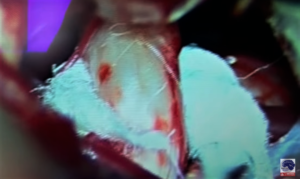
All other procedures which aim to treat Trigeminal neuralgia address the nerve away from the REZ.
Microvascular Decompression (MVD) is the only procedure that addresses the problem at the REZ. The demyelination-pain cycle is caused by a blood vessel that compresses the nerve. Microvascular decompression separates the blood vessel from the nerve. The neurosurgeon does this by inserting a teflon sponge (most often) between them. This keeps the nerve and blood vessel from not coming in contact with each other.
MVD surgery is the only procedure that achieves a high cure rate that has also the potential to be very long-term and permanent. MVD may also be performed for other cranial nerve hyperactivity disorders like Hemifacial spasms or Glossopharyngeal neuralgia.
How is Microvascular Decompression for Trigeminal Neuralgia performed?
Microvascular decompression surgery is done under general anaesthesia. A small opening is made behind the ear. The area of the brain where the trigeminal nerve enters the brainstem is exposed. A teflon sponge (a soft pad) is inserted between the blood vessel(s) causing the compression and the nerve.
How is MVD for Trigeminal neuralgia different from that for Hemifacial spasm?
When Microvascular Decompression is performed for treatment for Trigeminal neuralgia, the Trigeminal nerve is identified and decompressed. When MVD for Hemifacial spasm is performed, the seventh nerve is identified and separated from its compressing blood vessel
Which are the blood vessels that commonly cause compression on the trigeminal nerve leading to neuralgia?
The commonest are arteries, followed by veins. Sometimes it is a combination. The Superior cerebellar Artery (SCA) is the commonest offending blood vessel causing Trigeminal neuralgia. The Anterior Inferior Cerebellar Artery (AICA), the Posterior Inferior Cerebellar artery (PICA), the Superior Petrosal Vein are other notable blood vessels. There could be others as well, but are infrequent.
What is counter-compression?
Blood vessels compressing on the trigeminal nerve from one side is ‘compression’.
If the nerve is compressed by blood vessels or other elements from opposite sides, it is called ‘Counter-compression’.
Conditions Treated with MVD Surgery
Microvascular Decompression (MVD) is a surgical procedure used to relieve nerve compression caused by blood vessels in the brain. It is most commonly performed for conditions like Trigeminal Neuralgia, Hemifacial Spasm, and Glossopharyngeal Neuralgia. By addressing the root cause of nerve irritation, MVD offers long-term relief without damaging the nerve.
Redo MVD Surgery A Second Chance at Lasting Relief from Nerve Pain
Redo Microvascular Decompression (Redo MVD surgery) is a specialized revision brain surgery performed when symptoms like trigeminal neuralgia, hemifacial spasm, or glossopharyngeal neuralgia return after initial improvement from the first MVD procedure. In rare cases, patients may experience recurring facial pain or spasms due to incomplete nerve decompression, formation of scar tissue, or new blood vessel compression near the cranial nerves.
While the first microvascular decompression surgery has high success rates, a small group of patients may benefit from a carefully planned redo MVD to achieve long-term symptom relief. This advanced neurosurgical procedure is performed by experienced surgeons skilled in revision cranial nerve surgeries.
When is Redo MVD Surgery Needed?
Recurrence of trigeminal neuralgia or hemifacial spasm after MVD
Persistent or worsening facial nerve pain
MRI or imaging shows ongoing vascular compression
Failure of medications or non-surgical treatments
Benefits of Redo MVD Surgery:
Relief from medically resistant facial pain
Targeted treatment for recurrent nerve compression
Improved quality of life without damaging the nerve
Alternative to destructive procedures like rhizotomy
Despite being more complex than the initial operation, Redo Microvascular Decompression offers renewed hope to patients who previously responded to surgery but experienced a return of symptoms. With advanced imaging, microsurgical techniques, and expert hands, repeat MVD surgery can restore comfort and function.
Schedule an Appointment forSecond Opinion on MVD Surgery

A distinguished Brain and Spine Surgeon, shaping neurosurgical care in Pune, Maharashtra, India for over two decades.
Quick Link

Quick Contacts
- Phone : (+91) 9011333841 , (+91) 7720948948
- brainspine66@gmail.com
- 102, Bhagyatara Society, 1st floor, Mehendale Garage road, Erandwane, Pune
Map
- Copyright @2025 | Dr. Jaydev Panchwagh | Praavi Medicare

